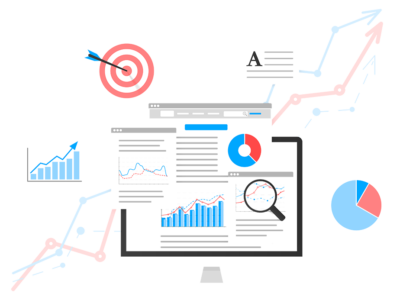The field of data analytics is always evolving, and in 2024, some new data trends will change how businesses use their data. Since many companies are relying on data to make decisions, it is crucial to be aware of these trends for success. In this blog, we will take a closer look at the important data analytics trends for 2024.
Top 5 Data Analytics Trends
1. Augmented Analytics: The Rise of Intelligent Insights
The groundbreaking concept of augmented analytics is leading the way in data analytics trends for 2024. This innovative approach integrates artificial intelligence (AI) and machine learning (ML) into the analytics workflow, automating data preparation, discovery, and interpretation.
Augmented analysis creates a smarter and more user-friendly analytics process, giving decision-makers valuable insights beyond traditional analysis boundaries. It also empowers them to make informed choices based on this enhanced understanding.
In the context of augmented analytics, natural language processing (NLP) and automated machine learning (AutoML) take center stage. NLP enables users to interact with data using everyday language, bridging the gap between technical experts and business stakeholders. Simultaneously, AutoML makes machine learning accessible to everyone, even those without deep expertise in data science. It lets more people use the benefits of predictive analytics.
2. Edge Analytics: Real-Time Decision-Making Redefined
Edge analytics emerges as a pivotal trend in 2024. Traditionally, data analytics has been centralized, requiring data to be transported to a central location for processing.
Edge computing can be represented as a distributed computing model that involves data processing near the point of generation, typically on devices or local servers, rather than relying solely on centralized cloud servers. This approach reduces latency, enhances efficiency, and is well-suited for applications requiring real-time data processing, such as IoT devices and intelligent sensors.
This change is particularly significant in industries where time-sensitive decisions are critical, such as healthcare, manufacturing, and Internet of Things (IoT) applications. Edge analytics not only enhances the speed of analysis but also reduces the burden on network bandwidth, paving the way for more efficient and responsive data-driven processes.
3. Explainable AI: Fostering Trust in Advanced Analytics
As organizations increasingly rely on complex AI models for decision support, the need for transparency and interpretability becomes paramount. Explainable AI (XAI) tackles this issue by offering transparent insights into how AI algorithms make decisions. In 2024, there’s a stronger focus on building trust in analytics. Making analytics results clear and understandable is a key part of ethical AI practices.
XAI not only ensures compliance with regulatory requirements but also helps organizations build trust among users and stakeholders. By understanding how AI models come to specific conclusions, decision-makers can confidently integrate these insights into their strategies, fostering a culture of accountability and responsible AI usage.

4. Graph Analytics: Unveiling Hidden Connections in Data
The interconnected nature of data has given rise to the prominence of graph analytics. In 2024, organizations increasingly leverage this approach to resolve issues within complex datasets. From social network analysis to fraud detection, graph analytics provides a unique lens through which hidden patterns and connections emerge, enabling a more comprehensive understanding of the underlying data structures.
This trend is particularly relevant in scenarios where traditional analytics approaches fall short. Graph analytics offers a holistic perspective by representing data as interconnected nodes and edges, empowering organizations to make informed decisions based on the subtle relationships within their data.
5. Automated Machine Learning (AutoML)
The shortage of skilled data scientists has long been a bottleneck for organizations aiming to harness the power of machine learning. This year, AutoML rises as a game-changing trend, automating the complete process of applying machine learning to address real-world challenges. This not only accelerates the model development process but also makes machine learning accessible to individuals without extensive technical expertise.
AutoML tools enable users to navigate the complexities of model selection, feature engineering, and hyperparameter tuning with minimal manual intervention. This democratization of machine learning empowers decision-makers to integrate predictive analytics seamlessly into their workflows, fostering a more inclusive and data-driven organizational culture.
Wrapping Up
As we navigate the world of data analytics in 2024, these trends light the way to a future where being smart, fast, clear, and easy to use are the keys to success. Augmented analytics, edge analytics, explainable AI, graph analytics, and AutoML all come together as a blend of technology and smart planning, changing how companies use their data.
By adapting these trends, businesses can not only deal with the challenges of data analytics but also lead the way in a time where data-driven decision-making is crucial for success.

